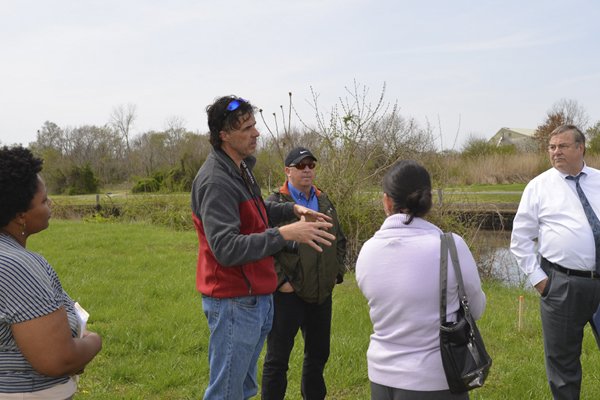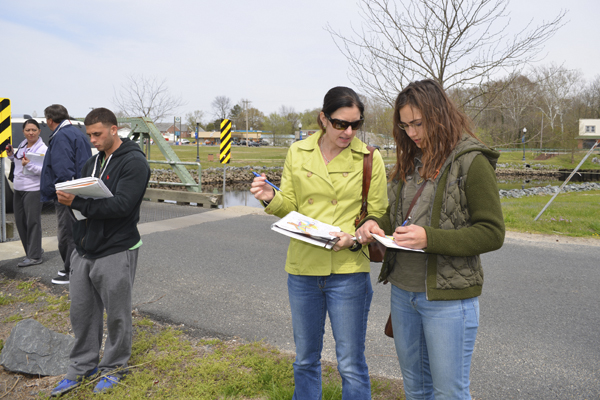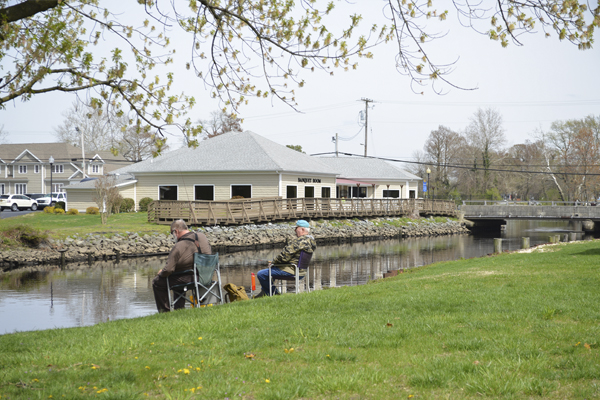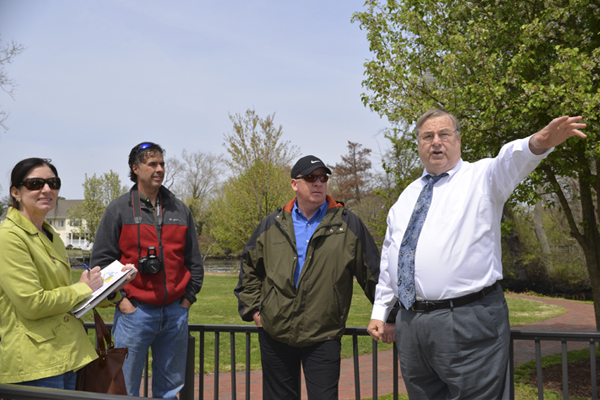


Reimagining Laurel
Delaware Sea Grant helps town balance environment, development along riverfront
1:14 p.m., May 7, 2014--During the 1800s, the southern Delaware community of Laurel exemplified small-town life in America: The economy centered around grain and lumber mills along the river running through town, and the surrounding tree-lined streets of Victorian houses provided family homes for generations.
Quaint charm remains in the many historical landmarks in Laurel today, but the downtown area experienced decline over time. Businesses and housing development gradually shifted east toward Route 13, the main transportation artery, and industrial operations along Broad Creek took an environmental toll.
Campus Stories
From graduates, faculty
Doctoral hooding
Looking to improve water quality both locally in the river and as part of a regional effort to restore the Chesapeake Bay watershed, the town is reimagining the riverfront with help from the Delaware Sea Grant College Program (DESG) and UD landscape design faculty and students. The project involves town leaders, developers, environmental regulators — and hopefully, increased participation from residents.
“Delaware Sea Grant is experienced in encouraging productive conversation and understanding the values of different groups,” said Ed Lewandowski, Delaware Sea Grant’s coastal communities development specialist.
Lewandowski led discussions last year about how to meet requirements of the Chesapeake Watershed Implementation Plan, from managing stormwater to reducing nitrogen pollution. Participants pointed out that such topics were closely linked to plans underway for redeveloping Laurel, especially in neglected areas like sections of the riverbanks.
Driving the development is the Laurel Redevelopment Corporation (LRC), which was started in the 1990s to support economic development in the town. The corporation helped convert land along the river into a large public park, with brick paths, benches and landscaping inviting pedestrians and recreational fishing. Commercial properties nearby, such as Abbott’s Grill and a medical office, generate rental revenue for reinvestment.
The park abruptly ends, however, where the river meets a road bridge and the land extends into a grassy field overgrown with vegetation. Ideas have been floated to build a fitness trail, housing or mixed-use residential and retail buildings there.
To help flesh out viable, environmentally responsible options for the space, Lewandowski enlisted UD landscape design faculty member Jules Bruck and undergraduate students from her computer-aided design (CAD) class.
Bruck has been reviewing existing maps on the area’s soil and geology, with Lorelly Solano, a doctoral student in the urban affairs and public policy program, gathering a historical perspective on the community.
The team is consulting with UD students who are from Laurel to learn what they like about the town and what they would like to see change.
“A lot of this has to do with environmental benefit to the area,” Bruck said. “But I’ve been very interested in making sure that we represent the town in a complete way and that we capture the voice of the community.”
The team walked the riverfront recently with town councilman Don Phillips and LRC property manager Brian Shannon, spotting areas where a kayak launch could be built and observing the car traffic over the river bridge.
Bruck will propose scenarios for constructing buildings and recreational space, while also integrating green infrastructure possibilities like porous pavement and rain gardens to address the focus on improved water quality.
Seniors Thomas Senff and Kiera Conlon are landscape horticulture undergraduates who have worked with Bruck in the past. They will collaborate on the proposal for the town, with a targeted completion date of finished renderings by late summer.
“I’m really interested in seeing the process from start to finish,” Conlon said.
The renderings will give the community a blueprint for creating a riverwalk and further developing the Broad Creek waterfront, Lewandowski said. Delaware Sea Grant has successfully helped other communities plan land-use scenarios in the past, promoting the idea that environmental and economic success are intertwined.
Lewandowski emphasizes that public participation is important and consulting with the community in open forums will be part of the process moving forward.
“One key objective is to increase the level of participation and public consultation in planning initiatives,” Lewandowski said.
About Delaware Sea Grant
The University of Delaware was designated as the nation’s ninth Sea Grant College in 1976 to promote the wise use, conservation and management of marine and coastal resources through high-quality research, education and outreach activities that serve the public and the environment. UD’s College of Earth, Ocean, and Environment administers the program, which conducts research in priority areas ranging from aquaculture to coastal hazards.
Article and photos by Teresa Messmore











